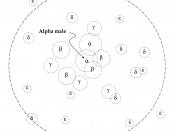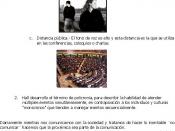Introduction The book, "The Hidden Dimension", written by Edward T. Hall was published in 1969. The book mainly aims the cultural perception of space by Hall's proxemics Theory, which also called "anthropology of space" (Hissey, 2004, p.44). Edward T. Hall who is an anthropologist, provides the idea that individuals communicate differently according to the different cultures. Hall uses ideas of space to strengthen his theme.
Synopsis of the BookIn the book, The Hidden Dimension, Hall mainly focuses on the concept of cultural perceptions of space, which affects individuals' communication. Therefore, Hall uses physiology, biochemistry, psychological, anthropology, and ethnology to build up the idea of human's cultural perceptions of space, which determines the personal and business relations, art, cross-culture and city planning.
First, Hall uses the studies of animals to show how human's behaviour are related to the environment. Space limitation is the basic function to show how animals behave disorderly.
The experiments of crabs, rats and Sika deer indicate that under different condition of physical distance, animals behave dissimilarly. If it is too crowding, stress is caused. Besides, visual space and auditory space are important as well since same thing in two individuals is not in the same way. Hall points out that "information received from receptor is modified by culture" (Edward T. Hall, 1969, p41). Individuals receive visions by eyes; receive sounds by ears; receive sensation by skin and muscles. However, Hall uses several examples, such as the tolerant of sounds of Japanese and German, to show individuals from different cultures get different information. Furthermore, Hall introduces kinaesthetic space, which is day to day living space, to explain the diverse communication in different cultures. The example of architecture is provided to improve individuals in different cultures experience dissimilar space. Scheme of "culture affect attitude" (Edward T.


